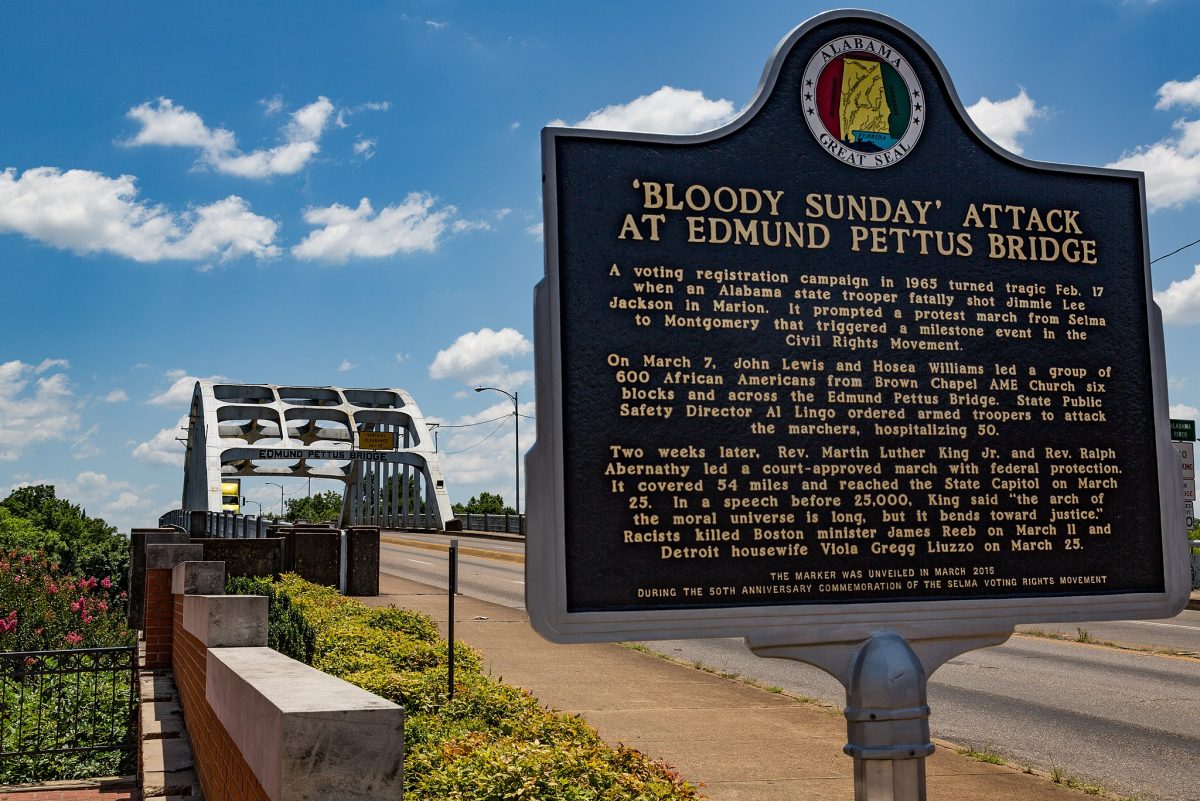“Selma” and the Embodiment of Discipleship

A week before Martin Luther King, Jr. Day my wife and I went to go see the film Selma. This inspirational movie focuses on the non-violent protests of Martin Luther King, Jr., the SCLC (Southern Christian Leadership Conference), and others in the small town of Selma, Alabama. It particularly highlights the march from Selma to Montgomery, a momentous turning point in the Civil Rights movement. The movie made a lasting impression on me for all sorts of reasons, yet one especially stood out above the rest, and can be summarized by the old adage, “actions speak louder than words.”

Martin Luther King, Jr. was a persuasive, powerful orator. But it wasn’t so much his words that made an impact, though no doubt they were extremely influential. No, what really turned heads, what really got the ball rolling, what pressured President Lyndon B. Johnson (according to the film) to act weren’t so much King’s words, but his actions. He and others embodied the very message that they proclaimed through various acts of non-violent protests.
What if Christians were more intentional in embodying the very message we proclaim? To some, placing more emphasis on “actions” or “works” quickly prompts uneasy “works righteousness” comments. But weren’t we created for good works, as noted in Ephesians 2:10?
Sometimes we live more like dualists, placing priority on cognitive assent (beliefs and doctrines) over praxis. I’m not downplaying the significance of the mind in the Christian life: in fact, I think it’s very essential for transformation through the “renewing of the mind.” Nonetheless, more is involved in transformation than merely thinking all the right things (cf. James K.A. Smith’s “Cultural Liturgies” project).
As I dive more into the Gospels, and even in the epistles of the New Testament, I realize that the call to discipleship involves at the bare minimum the summons to presence and practice (see especially Mark 3:13-15 and Suzanne Watts Henderson’s “Christology and Discipleship in the Gospel of Mark”). We’re called to be with Jesus and practice what he does. As inhabitants of the Crucified Lord, we are to be imitators, who reenact Jesus’ ways.
But we are usually quick to pinpoint the launching pad of discipleship with conversion, especially when one can articulate the (soterian) gospel. Everything leads up to this decision, this cognitive assent. Everything prior was merely preparatory. You hear the testimonies in churches all the time: “I grew up in the church, but was only going through the motions: I was there every Sunday and Wednesday, participated in a small group, read my Bible from time to time, went on mission trips, but then I got it when I realized…” It’s as if going to church, participating in a small group, reading one’s Bible, and participating on mission trips weren’t viewed as legitimate, because this person couldn’t lucidly vocalize what most believers deem a confession of faith.
But what if there are pre-converted disciples (see Alan Hirsch’s “Disciplism”)? What if the journey of discipleship doesn’t begin with a confession of faith, but with drawing near to Jesus (via the Church) and participating in his mission? (Consider Wesley’s missionary trip to Georgia before his Aldersgate experience.)
In Mark 3, Jesus called the 12 disciples (later known as the apostles) to be with him and practice what he was doing: preach the gospel (words) and cast out demons (deeds). Had the disciples, at that point, fully gotten it? No. In fact, the real “confession of faith” moment isn’t announced by Peter (the representative) until chapter eight in Caesarea Philippi. Even at this point, Peter and the disciples’ “aha!” moment is short-lived, to put it lightly. (“Get behind me, Satan!” Yikes!) Did they cease being called “disciples?” No! Did they cease following Jesus and doing what he was commanding? No!
In the church today, we delay calling folks “disciples” until they have been converted. Maybe we are too enamored with quick-fix solutions?Maybe we demand instantly gratifying results? Maybe we need to expand our vision of discipleship.
What happens when we expand our vision of discipleship?
1) Evangelism is seen within the context of discipleship, rather than the reverse. This approach is relationally driven, and more fully reflects Jesus’ model. We embody what we believe and show people what it means to follow this Jesus who we proclaim as crucified and risen Lord of the cosmos.
2) If we are going to show people what it means to follow Jesus, we need to know what he was up to. What was he doing? Why? We need to dive deeper into understanding what he was actually doing and why in order to creatively reenact his ways in the 21st century in our respective subcultures.
3) We must adopt a mentality of radical mercy and radical patience. Will there be shortcomings from these pre-converted disciples? You better believe it!
4) Jesus was on the go! Yes, people sought him out, but he also didn’t wait for people to come to him (Mark 1:38). The church has to go out to the marginalized borders of society if we are going to reach others.
What might things look like if we focused more on embodying our beliefs in word and deeds? I think Jesus is more concerned with daily decisions, rather than a one-off articulation of faith (though articulating what one believes is extremely important).
As followers of Jesus we are empowered to embody his ways and bring others along on the Way of Discipleship, which is the Way of the Lord. When we discover how to symbolically reenact his ways, like Martin Luther King, Jr. and the Civil Rights Movement, we will see heads turns, more decisions being made, and more actions taking place.